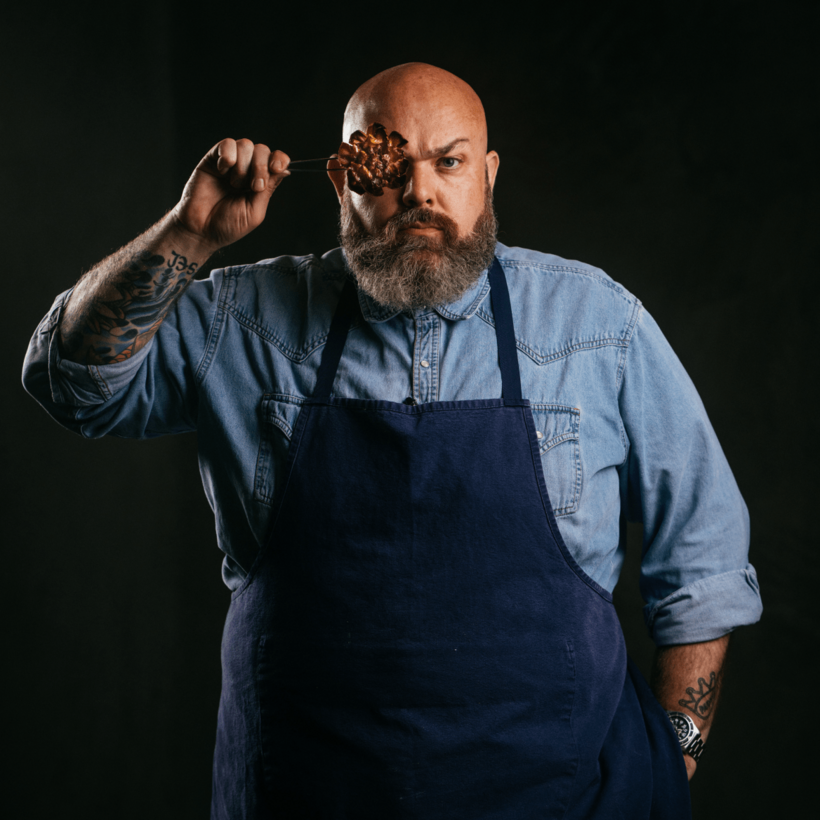“There is grand potential here,” says Evan Funke. The chef behind Felix Trattoria, in Venice Beach, is talking about his second restaurant, Mother Wolf, a celebration of Roman cuisine that just opened in the landmarked Los Angeles building that once housed the Hollywood Citizen-News.
When Felix debuted, in 2017, it was a runaway success. (“You have managed to land a reservation at Felix Trattoria,” began the late Jonathan Gold’s review.) The restaurant, which is a partnership between Funke and Janet Zuccarini, the founder and C.E.O. of Gusto 54 Restaurant Group, became a canteen for Hollywood notables including Gwyneth Paltrow. It regularly draws paparazzi and citizen journalists, who file their latest sightings to the likes of Deuxmoi.

Felix’s success did a great deal to advance Funke’s reputation as a quixotically single-minded adherent of Italian culinary custom, an American pasta practitioner to out-orthodox them all.
He doesn’t renounce the mantle. Funke refers to himself as a “custodian of Italian tradition” and “storyteller.” In photos, the chef, whose solid build and serious countenance fail to betray his gentle manner of speaking, can often be seen clutching his mattarello as if preparing for a joust.
The seventh-generation Angeleno spent seven years at Wolfgang Puck’s Spago, where he worked as a sous-chef. After leaving his post in 2007, he traveled to Bologna to study the ways of pasta. There, he experienced an awakening. Learning how to make tortellini with master sfoglina Alessandra Spisni would, according to the chef, inspire him to “throw all other techniques I had learned out the window, in perpetuity.” Now, at Felix, there’s a glass cage in the middle of the dining room where Funke rolls pasta by hand during service.
At 8,600 square feet, Mother Wolf is a bigger stage. It may even take Funke’s regulars a minute to adjust to its scale and ornamentation: the heft of the Art Deco building on the corner of Wilcox and Selma, the dining room’s vaulted ceilings, Murano light fixtures, and general embrace of the color red.
In another sign that we’re no longer by the beach, service captains at Mother Wolf wear white suit jackets. These uniforms suggest Trattoria al Moro, the elegant Roman institution—as well as the way the servers were attired at Romanoff’s, the erstwhile Beverly Hills hot spot.
“If we do this right, people will take to our modern embrace of old-world formality,” says Funke. “In this area, especially, you need to create an experience Angelenos will drive through traffic for.”

The food should be the biggest draw. Funke has assembled an extensive menu of Lazio’s standards, from various takes on pizza tonda and the region’s fab four—gricia, amatriciana, cacio e pepe, carbonara—to puntarelle, the bitter strands of Catalonian chicory that Romans pair with an assertive combination of garlic and anchovy.
Funke imports the ricotta that fills the fiori di zucca straight from Rome as well as the flour, salumi, and basically any other ingredient he can secure from the region. “The food in Rome is so environmentally driven, so based on terroir,” he says.
But Funke subtly makes certain dishes his own. He adds Caciotta cheese to the puntarelle, while the carciofi fritti, traditionally served by themselves in the Italian capital, leave the pass at Mother Wolf with a side of salsa verde.
The Rome-based writer Katie Parla, who co-authored Funke’s cookbook, American Sfoglino, cites these choices—and especially the range of the restaurant’s menu, which spans more categories and influences than the typical Roman trattoria—as examples of how the chef understands his audience. “A straight Roman menu wouldn’t fly anywhere in the U.S.,” she says. “Mother Wolf manages to create an overall impression.”
Although Funke occasionally tweaks the classics, it is no surprise to hear that his principal motivation is to be a “tuning fork to tradition,” introducing diners to dishes that can still be hard to find in their food-mad city.
“I’d love for a couple to travel to Rome and order some gricia at a restaurant there because they remembered trying the one at Mother Wolf,” he says. “And I am totally O.K. with the possibility that they’ll like that chef’s version more.”
Lifelong New Yorker Gabe Ulla writes about food and culture for WSJ., Town & Country, and Vanity Fair, among others. He is also the co-author of Ignacio Mattos’s Estela and David Chang’s Eat a Peach: A Memoir

